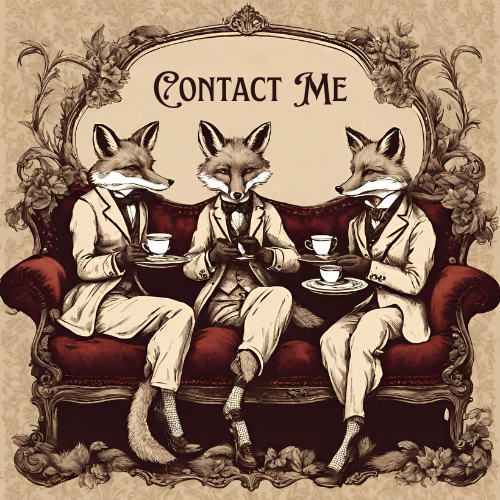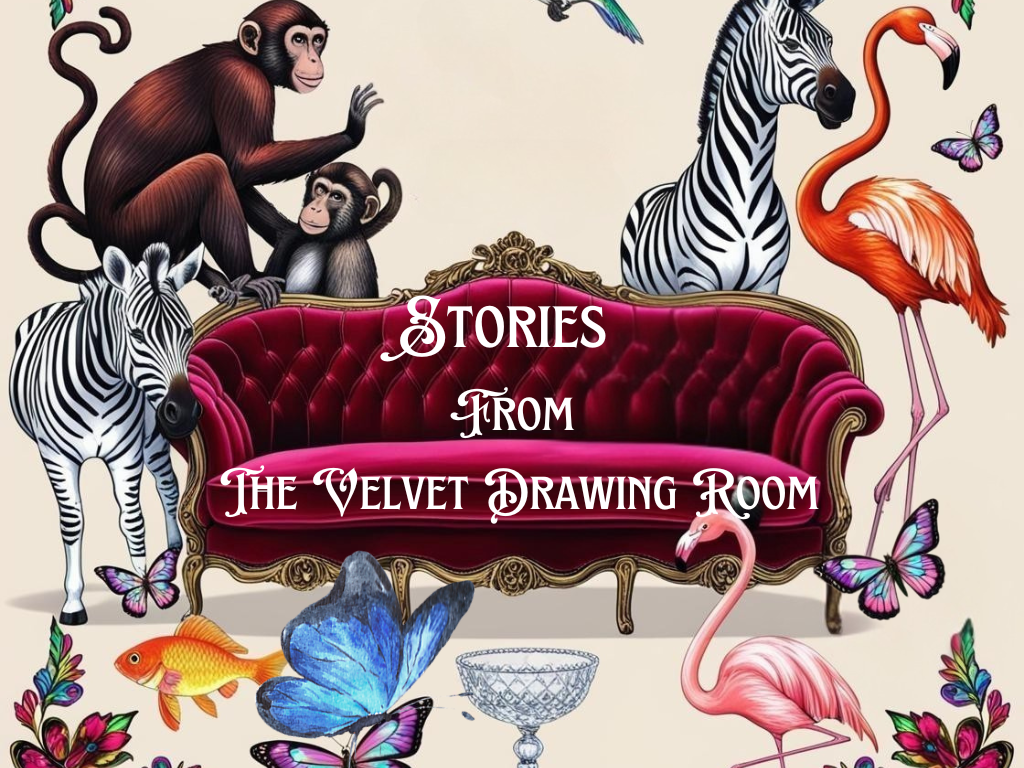Henry Murray of Carnforth
Master Saddler, Taxidermist and Naturalist
The firm of Henry Murray of Carnforth was established in 1872 and finally closed in 1961
Henry Murray of Carnforth (b. 1851 d. 1927) was known for his lovely victorian cases that had beautiful painted scenic lakeland backdrops done in watercolour and gouache.
After starting life as a Saddler, Henry Murray and Son became one of Britain’s most celebrated taxidermy firms and the cases are sought after today.
EARLY LIFE – A DESTINY
Henry Murray Saddler & Taxidermist
Henry Murray of Carnforth was born in 1851 in Holme, Westmorland (now Cumbria). The son of Susannah and Isaac Murray, they started their family life living nearby with Susannah’s parents at Nook, Carnforth.
The extended Murray family were practical tradesmen – shoemakers and saddlers, and no doubt the life-long experiences in leather of all of the tradesmen in the family with their specific knowledge, skills and abilities played a great part in the creation of the talent of Henry Murray.
Henry Murray initially set out as a Saddler and then became one Britain’s most celebrated taxidermists.
MID to LATE 1800s
Marriage & Children
Henry Murray married Mary Jane Wilkinson (b.1857 in Lancaster) and they had seven sons and a daughter.
Henry Murray’s son, Albert James, followed Henry into the naturalist business and became a celebrated taxidermist in his own right.
The trade of Saddler continues until at least 1900
In 1881 Henry Murray was listed in the census with the trade of a Saddler, and in March 1890 in The Lancaster Gazette, a reference to Henry Murray’s occupation is still shown as “Saddler”.
Henry Murray’s family
Henry and Mary Jane had seven sons, one of whom died aged 2 months) and one daughter.
The children
John Henry Delhi (b. 1878)
Albert James (b. 1879)
George (b. 1881)
Ada (b. 1883)
Frederick (b. 1885)
Edmund (b. 1887 d. 1926)
Francis Stanley (b. 1890) died age 2 months
Isaac Thomas (b. 1891).
1900s- TRANSITION FROM SADDLERY
MASTER SADDLER TO TAXIDERMIST
Old labels of Murray’s show that he established his taxidermy business in 1872 at 6-8 Scotland Road, Carnforth.
There is no information about the time or place of Henry Murray’s transition from Saddler to Taxidermist, and perhaps there was no “transition” at all but he continues to be listed on the electoral roll as a Saddler, occupying 12 Scotland Road – a house and a shop between 1880 – 1906.
There is evidence that he conducted business as a sadler in three localities of Lancaster, Carnforth and Morecambe up to 1884.
After 1906 he is listed at number 6 Scotland Road and it’s entirely possible that he ran two businesses in parallel – both in Scotland Road. Since people in those days rented, rather than owned their premises it’s likely they worked from both addresses.
Historically being a Saddler in this locality was a very good trade to have. Carnforth’s geographical position between Lancaster and Kendal is a strategic one because these two towns are the key stops on the highways and the major route through England into Scotland.
In the days of wagons and horses, before the early 1900s, blacksmiths, inns and saddlers were essential services for all travellers, and Carnforth had them all.
It’s possible that from 1900, at the age of about 50 yrs. with the influx of cars and all the changes that they brought that Henry Murray decided that he had to re-focus his trade on Taxidermy alone. His lifelong skills as a Saddler were the perfect foundation for it.
We don’t know where he specifically learned the trade of taxidermist, but there’s another very important element at play here. I was born in this area, and I’m very familiar with the landscape. Carnforth, Lancaster, Westmorland, Milnthorpe and Kendal – all the places in Murray’s life – are at the heart of the Lake District landscape.
The countryside is beautiful and unspoilt and it’s teeming with wildlife. Otter, Fox, Birds, and other small mammals were in abundance. They were part of everyday life. The gulls and sea birds that Murray did so many of came from the local coast – the Morecambe Bay. So, Murray has two advantages when he decides to focus on Taxidermy; he has the right skills to adapt and he has the right environment.
Murray’s son Albert James Murray is shown on census and electoral roll information as a Master Saddler and Taxidermist right up until 1961 when the shop finally closed. Albert James died in 1962 at the age of 82 yrs.
Some examples of Murray's Work
Beautiful cases with painted scenic backdrops
1944
Witness to Henry Murray’s shop in Scotland Road
In about 1944 when my mum was 5 years old, she remembers often being outside the taxidermy shop of Henry Murray, Scotland Road, Carnforth while she and her grandmother waited for the bus to Lancaster.
During the 2nd World War, she had been sent from Barrow to live with her grandmother in Carnforth, because it was considered safer, since Barrow had a shipyard, and that was a key target of the enemies.
She particularly remembers seeing the fox heads in the window of Henry Murray’s shop. I was thrilled to know that she’d had this experience, but I only discovered it when she was age 80 years and she told me incidentally.
So me and my mum drove down Memory Lane, and took a trip back to Carnforth where we found her Grandmother’s house in Ramsden Street, very near to Murray’s shop premises.
Sadly but inevitably, Murray’s shop is no more; his workshop is demolished replaced by a car park, and the enchanting shop window is now a dilapidated, empty Chop Suey takeaway.
The Carnforth high street still has charm and I couldn’t help wondering if it was beyond the realms of possibility to repurpose the shop again and make it into a small museum which would restore some sense of history and make a tourist attraction.
Visit to the Kendal Museum
The home of Henry Murray's work
photos: Dorne Lovegrove
2022
The Kendal Museum
After the memories of the war time stay in Carnforth came up, me and my mum went to visit the Kendal Museum in 2022 where much of Henry Murray’s stuff ended up and it brought back more memories for her . For me it fanned the embers of pursuing the history of lost skills and the beauty and drama of the historic taxidermy businesses.
The picture is a visual record of the upstairs floor at the Kendal Museum as it used to be – before specimens were dispersed. These beautiful cases with their carefully prepared mounts are the work of Henry Murray of Carnforth.
There’s a lot to love at the Kendal Museum. It’s intimate and cosy with that wonderful Victorian library feel about it. The staff are great and are very interested in their exhibits and also their visitors.
Alfred Wainwright was Honorary Curator of Kendal Museum from 1945–1974, and you can still find his handwriting on various artefacts in the Museum today.
Wainwright (1907-91) will always be known for his famous Pictorial Guides to the Lakeland Fells which he compiled between 1952 and 1966.
As far as Henry Murray’s work goes, he was known for his lovely cases that had beautifully painted lakeland scenes as backdrops. It is agreed that these painted scenes are very well executed and generally accepted that Henry Murray outsourced the scene-painting work to a local artist, who remains unknown.
photos: Dorne Lovegrove

photo: Dorne Lovegrove
The Kendal Museum Collections including the extinct Tasmanian Tiger
The Kendal Museum had amassed a lot of stuff collected through donations by Dr William Rushton Parker (b.1853) who was a wealthy benefactor. From the 1900s he donated specimens including birds from Europe, Africa and South America to the museum that were bought already mounted, and then they were cased by Henry Murray and sent to the Museum. Retiring in 1919 at the age of 66, Parker went to London, and he became a Fellow of the Geological Society, the Royal Geographical Society, the Royal London Zoological Society and the Linnean Society. Parker spent much of his time in the library of the Royal Institution of Great Britain. From London he sent many specimens back to the Kendal museum.
In 1939 one of the important things that Dr. Parker donated was a Tasmanian Tiger. It is thought that the species became extinct in 1936 . The Kendal Museum has very little further information on this specimen or its history, but the museum states that this was once cased by Henry Murray.
THE BROCKHOLE VISITOR CENTRE
During my visit to the Kendal Museum I discovered that a lot of the cased birds and mammals that had previously been upstairs in the Kendal Museum had been sent “on loan” to the Brockhole Visitor Centre on the shores of Windermere where Murray’s creations have been integrated into an exhibition called “The Lake District Story”.
We went to the Brockhole Visitor Centre, expecting great things. I wish I could tell you that it was wonderful, and that Murray’s masterpieces had been cherished and displayed as they should have been. They haven’t. I was hideously disappointed. Much of it has been taken out of its cases and set into landscape scenes that attempt to show the development of the environment and the natural history of the Lake District.
As much as I support conservation and the idea of teaching new generations how important the preservation of wildlife is, I could not accept what I considered to be the destruction of part of one of the most important collections in Britain. It appears that the museum curator or, more likely these days, “the management team” at Brockhole simply didn’t understand or appreciate the Murray legacy or the skills and the art that was Murray’s trademark.
There isn’t one mention of the art of taxidermy or even the word “taxidermy”. Why is this?
Is it because the museum management cannot explain it to audiences? If not, why not?
Perhaps I visited on a day that the instructional labels that would explain this were undergoing creation or refurbishment – it could be the explanation, couldn’t it?
No. Didn’t think so.
These cases are now lost forever. We cannot recreate them. In my opinion it’s vandalism.
HENRY MURRAY’S LEGACY
Henry Murray died in 1927
When Henry Murray died on 20 August 1927, he was on holiday in Harrogate. He was to have returned home that day, but tragically suffered a seizure in the street.
His wife had died the previous year, as had his son, Edmund. The probate record shows that he left the sum of £4,816 13s 9d to his two surviving sons, Arthur James, and Isaac Thomas. Today, this money would be the equivalent of about £380,000 when you allow for inflation. When you consider that ordinary people in this period rented their houses, and did not own them, you have to recognise that this sum of money is huge, since it doesn’t include proceeds from a property.
It’s a strong testament to the success of Henry Murray’s business as a Taxidermist.
Maybe the advent of the motor car after 1900 that forced a focus on natural history was the best thing that ever happened to him?
Discover more from thevelvetdrawingroom.co.uk
Subscribe to get the latest posts sent to your email.


















































